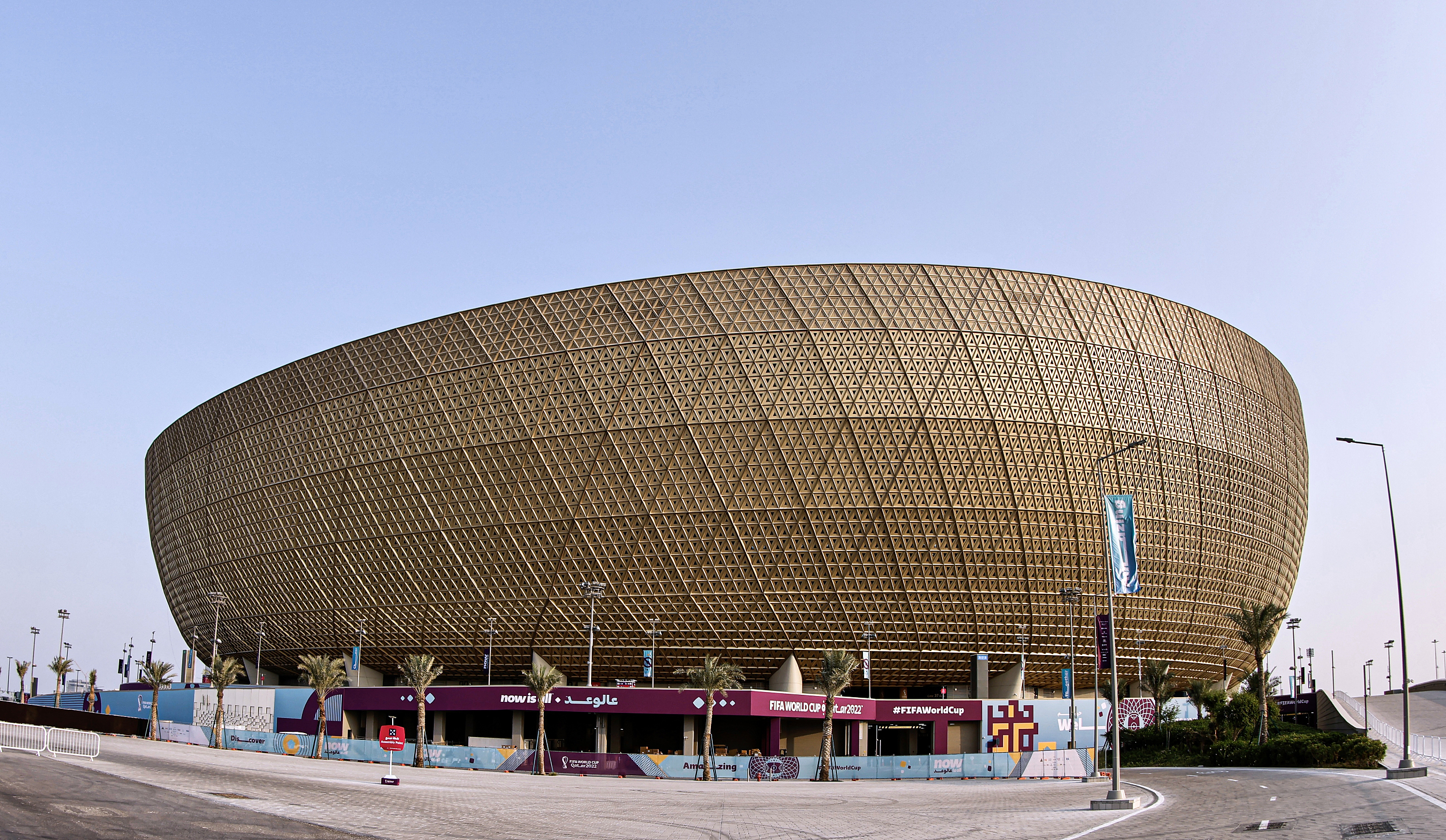Chinese Technology Stars at Qatar World Cup

Photo shows Qatar's Lusail Stadium in Lusail, Qatar on November 07, 2022. (PHOTO: VCG)
By WANG Xiaoxia
The FIFA 2022 World Cup kicked off on November 20 in Qatar, attracting the interest of hundreds of millions of soccer enthusiasts around the world. Among all the excitements brought by this cup, Chinese innovation and cutting-edge technologies are highlighted.
Chinese elements can be seen everywhere in Qatar, such as stadiums construction, power supply, transportation and irrigation systems.
Sustainable stadium
Chinese companies have taken part in the construction of all the eight stadiums of the Qatar World Cup.
The Lusail Stadium, which will host the World Cup final and closing ceremony, was built by China Railway Construction. The golden -bowl -like building is Qatar's biggest stadium and has a seating capacity of 92,000.
The Lusail Stadium meets the highest FIFA standards, and it was the first time that a Chinese company, as the major contractor, carried out the design and construction work for a World Cup stadium, said Li Bai, leading designer of the stadium.
The construction of the stadium adheres to environmental protection and sustainability. It adopts a double -skin curtain wall to improve the thermal insulation abilities during hot weather. Air flows in the intermediate cavity of the wall and will be cooled before entering into the stadium, thus reducing energy consumption for air-conditioning.
Recycled water is used to irrigate plants around the stadium while water efficient fixtures and leak detection systems are operational. The construction site conserves 40 percent more fresh water than conventional stadiums, according to FIFA website.
Green energy
Chinese eco-friendly buses are used on a large scale for the main services during the 2022 World Cup, which is unprecedented for the international football gala.
Qatar imported 1,500 buses from China, including 888 electric buses, which shuttle between stops transporting fans, FIFA officials and media to stadiums.
To meet the operational conditions in Qatar, the Chinese vehicle company Yutong equipped the motors of electric vehicles with sand-proof facilities, adopted cooling systems for batteries, and adopted intelligent temperature control air conditioners in the buses.
The environmentally friendly and smart buses have been well received by locals. The fleet of e-buses will be embedded in the country's public transit system, thus creating a lasting legacy of clean energy mass transit after the Word Cup, said the Qatari ministry of transport.
The AI Kharsaah photovoltaic (PV) power station, contracted by Power Construction Corporation of China, can provide about 1.8 billion kWh of clean power annually for the country, meeting demands of about 300,000 households and reducing 900,000 metric tons of carbon emissions. Chinese-built PV power stations are also providing green and stable power for Qatar during the World Cup.
Water-saving irrigation
At the World Cup, the technology applied to the irrigation and maintenance of soccer pitches was developed by China's Ningxia University.
Located inland, Ningxia Hui Autonomous Region suffers from an arid climate and severe water shortage, and it has rich experience in improving water usage efficiency.
According to Reuters, a Qatari stadium takes 10,000 liters of water per day to irrigate in winter. Paradoxically, Qatar is severely short of fresh water, while desalination technology uses large amounts of crude oil.
The Chinese technology utilizes wind and solar power to lift water from underground, and uses the Internet of Things to operate smart control of irrigation.
Since 2016, with support from the Department of Science and Technology of Ningxia, Ningxia University started to promote the water -saving irrigation equipment and technology in Arab countries, and trained a group of Arab technicians. The large -scale application was achieved successfully in typical arid areas of Oman, the United Arab Emirates, Egypt and other countries.
In 2020, China and Qatar reached a cooperation agreement on building a technology transfer center. Over the past two years, technicians have installed and upgraded Chinese equipment in Qatar, so that its smart water-saving irrigation technology shines in the World Cup stadiums.







